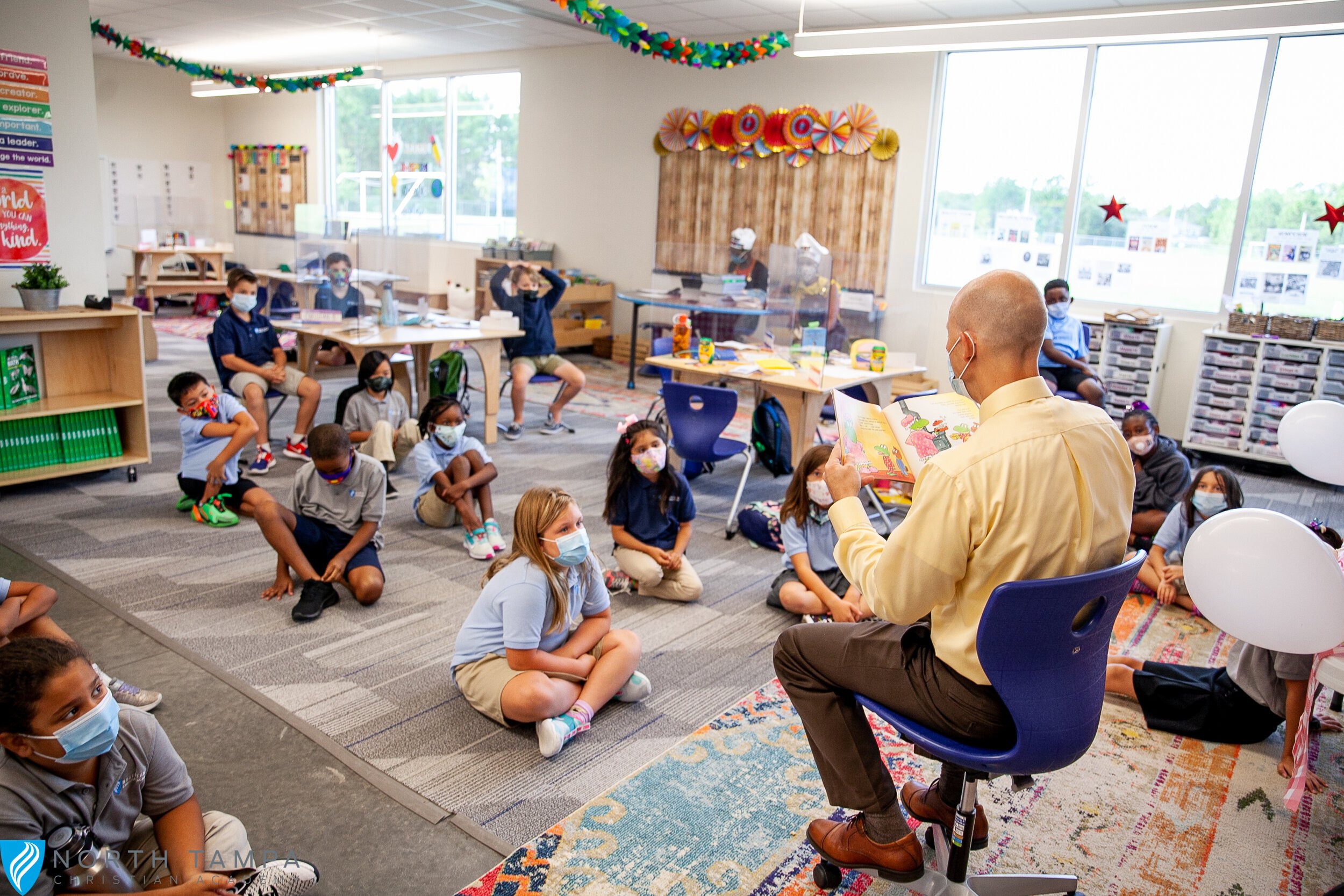Some of the best education happens at home. Teaching your child about science doesn’t have to mean buying a microscope kit, choosing a science camp to send your child to or taking trips to the science museum. Try these simple science projects with your child at home to make scientific concepts more relatable.
Create and Play with Oobleck
Oobleck is a prime example of a non-Newtonian fluid. This means it acts like a liquid when being poured and like a solid when any amount of force is applied. Then, when the force goes away, it turns right back into its liquid form. Oobleck started out as a fictional substance that fell from the sky in the Dr. Seuss book “Bartholomew and the Oobleck.” The real-life version makes for an easy, fun science experiment.
Here’s how it works:
Slowly mix 1 cup water with 1.5 - 2 cups of cornstarch together.
You may need to add more cornstarch. Do so slowly until you reach the desired consistency, liquid yet solid. Due to the texture, you should mix it with your hands.
When you reach the solid/liquid consistency, add food coloring as a finishing touch.
Try squeezing the Oobleck, making it into a puddle and dragging your fingers through it, or shaking it up in a plastic container. If you have older kids (and aren’t afraid to get a little messy), consider putting more Oobleck into a plastic kiddie pool and having your child run across it. You and your child won’t be able to help participating in this experiment together.
Put an Egg in a Glass Bottle
Playing with food always makes for fun science experiments. The idea of this experiment is watching an egg peel itself to fit into a container. It will require your help or supervision, as it requires fire. Pick a glass bottle with a small opening, one that’s at least half the diameter of an egg. Birthday candles will make this experiment more visually exciting, but you can use matches if you have them.
Here’s how it works:
Start by boiling and peeling an egg. You may want to boil and peel a few just in case something goes wrong. Worst case scenario, you have a snack for later!
Next, stick one or three small birthday candles in one end of the egg, pushed in firmly, not deep enough to make the egg fall apart.
Light the candles.
Place the lit end of the egg/candle into an upside-down bottle, letting a little bit of air in for a few seconds.
Then, lower the bottle early, and watch the egg shrink to fit as it falls in.
This experiment shows how liquid, solids and gasses work together to cause pressure as they react to one another.
Homemade Lava Lamp
Some of the most fun home science experiments are done with items you can find in your kitchen. The homemade lava lamp experiment also uses an ingredient that most people have in their medicine cabinets: Alka-Seltzer.
Here’s how it works:
Grab a clean transparent PET water bottle or clear cup, vegetable oil, water, Alka-Seltzer and food coloring. You’ll also want a funnel to make it easier to pour in all the ingredients.
Start by filling the water bottle halfway with water and adding in a few drops of food coloring.
Fill the rest of the water bottle with cooking oil, giving the contents a little bit of time to settle and separate.
Next comes the Alka-Seltzer tablet. If you’re using a bottle, break the tablet into quarters before dropping it in if needed to make it fit. If you’re using a cup, drop the tablet in whole.
Then, watch the colored water swirl through the oil, creating a lava lamp effect! The Alka-Seltzer turned this basic water-and-oil project into a fascinating look into perpetual motion. This helps demonstrate what it looks like when multiple chemical reactions are happening at once.
Sugar Water Density Rainbow
Creating a rainbow with sugar, water and food coloring will require a little bit of patience, but the end result will be worth it for an older child or teen. This experiment will show how different amounts of sugar and food coloring create different densities, allowing what looks like colorful water to be layered.
How it works:
For this experiment, you will need sugar, water, food coloring, five glasses, a tablespoon and a pipette or syringe.
Start by filling the first four glasses with water, leaving the fifth one empty.
Add two to three drops of red food coloring to one glass, yellow to another, green to the third and blue to the fourth glass.
Add one tablespoon of sugar to the yellow, two to the green, and three to the blue.
Stir the solutions in each glass until the sugar dissolves.
Fill ¼ of the empty cup with the blue solution using the syringe or pipette.
Then, fill with ¼ of the green, ¼ of the yellow and ¼ of the red. Do this slowly to ensure that the colors don’t mix.
Then, voila! You have a liquid rainbow! This is because each of the liquids has a different density, which allows them to sit on top of each other as long as the experiment is done carefully.
Our school encourages project-based learning in the classroom and at home. At North Tampa Christian Academy, a Tampa private school, students thrive creatively, academically and spiritually in a project-based learning environment. Faculty and families work together to inspire leadership through Christian innovation. Contact us today to learn more.





